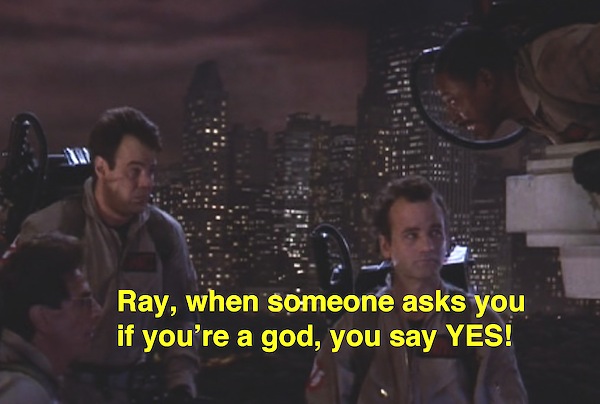I recently registered my pug Delia as a service animal. This blog post is about why I did this and what steps are necessary for someone considering doing this as well.
Why I Registered Delia
Since I stopped self medicating with alcohol, my emotional health has become quite fragile. A lot of things I was numbing with alcohol are no longer numb and it’s become increasingly difficult for me to function without my animals.
 I made the decision to register her when I went on a business trip and had a complete shut down. I knew I was not feeling well before I left on the trip. Things got progressively worse as the trip went on. I did not want to disclose my disability because I did not want to have to deal with attempting to explain what was going on because I thought it would affect my ability to retain this contract.
I made the decision to register her when I went on a business trip and had a complete shut down. I knew I was not feeling well before I left on the trip. Things got progressively worse as the trip went on. I did not want to disclose my disability because I did not want to have to deal with attempting to explain what was going on because I thought it would affect my ability to retain this contract.
I made it to the last day of my trip, but then I could not put it off any longer and I shut down.
I realized as I was having my shut down that I would not be able to hide what was going on. I realized that I would have been able to avoid this situation if I had my dog with me to pull me out of it before things degraded to that point.
Shut downs are unpleasant. When I have one, I lose my ability to move. I stop being able to think clearly and I talk more than I should about things. I start to feel intense feelings of shame and hopelessness. I feel worthless and feel like the world would be better off without me because I can’t do anything right.
It takes a long time for me to recover from these. The aftershocks of this shut down affected me for a month. No matter how difficult it is to explain the need for the support animal, it would be better to explain it up front rather than trying to hide it and deal with the aftermath.
I understand that this means that there are places who will not want to work with me because they don’t want to deal with “broken” people. I am writing this off as places I don’t want to work anyway because they are going to break me if I work for them anyway. I know this severely limits the number of places I can work, but I am hoping to figure out a way to continue to have independence on terms that make it possible.
How to Register a Support Animal
I went to the National Service Animal Registry to find out if it was possible to register Delia as a service animal.
There are three tiers of support animals:
Service animals require the most training. They also have the most “rights.” People who require a service animal are people with physical disabilities who require the animal to supplement their own physical abilities. They need the animal to help them see, to take care of them if they have a seizure, and do a lot of heavy lifting.
Therapy animals have really limited “rights.” They’re primarily meant for things like nursing homes and hospice care. They can’t really be taken anywhere else beyond that.
I registered Delia as the third option, an ESA. I don’t need her to be able to take care of me if I have a seizure because I don’t have seizures. I have panic attacks and PTSD flashbacks when I am in crowded areas like airplanes. I just need her to keep me calm so that dealing with these situations is less emotionally draining for me.
In order to have an animal qualify as an ESA, you must have them registered with the registry and you must have a note from your doctor that is dated that says they are treating you for an illness in the DSM-IV and you are currently under their care and that the animal is part of your therapy.
ESAs do not have unlimited rights. They are not allowed to be banned from airplanes or from hotels/housing. If I were to go crazy and decide to relocate to San Francisco, theoretically a landlord can’t force me to pay a pet fee to have her there or to decide not to rent to me because I have a “pet”.
Not a “Pet”
 When I took Delia to Indie DevStock, a conference attendee posted a picture of us on Twitter and said that the conference was pet friendly.
When I took Delia to Indie DevStock, a conference attendee posted a picture of us on Twitter and said that the conference was pet friendly.
Delia is more than a pet.
I require Delia to be able to function. I didn’t bring her along because I couldn’t find someone to watch her or was too cheap to place her in a kennel.
If I don’t have her I have panic attacks. I have complete shut-downs. I have issues that can be ameliorated by having her there for support.
Yes, You May Pet Her
I know that many people with working service dogs do not want them to be petted because they are working. That is not the case with Delia.
Delia is there to provide comfort and support. I am happy when she is able to do that with more people than just me. If you want to pet her and petting her makes you happy, then she is doing her job.
Requirements
The biggest requirement for a support animal is that they have to have a calm disposition. They can’t be aggressive toward other animals or children.
Since Delia basically spends all day asleep, she works as a support animal.
They have to be trained to be on a leash. They have to be potty trained. You are still responsible for their poop and so forth. This was a pain on the last day of my trip when Delia had to go outside three times between midnight and 3:00 am.
It took a bit more planning to make sure I brought enough food for her. I also had to bring puppy pads and bowls for water. There was a lot of stuff I had to make sure I did not forget when I brought her on a trip.
Why I am Doing This
I am not doing this because I think I am somehow special and should be able to take my dog with me places. I am doing this for a few reasons.
The first reason is that I care about my mental health. I know we as a community do not like to say we can’t do things. We push ourselves to work eighty hour weeks to show we’re passionate and we don’t like to be the first person to leave the office. We put pressure on ourselves and the people around us to live up to some imaginary ideal that does not benefit anyone but the people who pay us for forty hours of work when we give them eighty.
The other reason is that I want there to be more awareness of invisible disabilities in our community.
We talk a lot about wanting diversity. That usually involves getting more white women to speak at our conferences. There are lots of kinds of diversity. I would personally like to see more people of color at our conferences. I would also like to see more people with disabilities.
There is a lot of pressure to hide a disability. Human Resource people are constantly afraid you’re going to sue them for whatever reason, so they don’t want you there even though all you want is to earn a living and be treated like a human being worthy of respect.
The company I had my contract at told me that they had never seen a service animal at the company. This tells me that people who are disabled enough to need a service animal either don’t apply to these places because they know they won’t be hired, or they give up trying to make it somewhere like that because they run into too many road blocks along the way.
I think our community should help one another out to try and make sure more people make it to the top of this profession. Instead of trying to force people out for not being able to work 60+ hours a week, we should find solutions that allow people who are differently abled to have a career and support themselves.
I could hide my dog and my mental health problems and pretend to be normal, but that helps no one. I think we as a community need to focus on keeping everyone mentally healthy so we can have more people who have 15 years of experience who are still programming and helping the newbies learn new stuff rather than burning them out and forcing them into management or some other less stressful line of work.
Programming is a marathon and not a sprint. We should be trying to make sure as many people get to the finish line as possible rather than trying to knock out as many as we can so that we can get a better score at the end.


